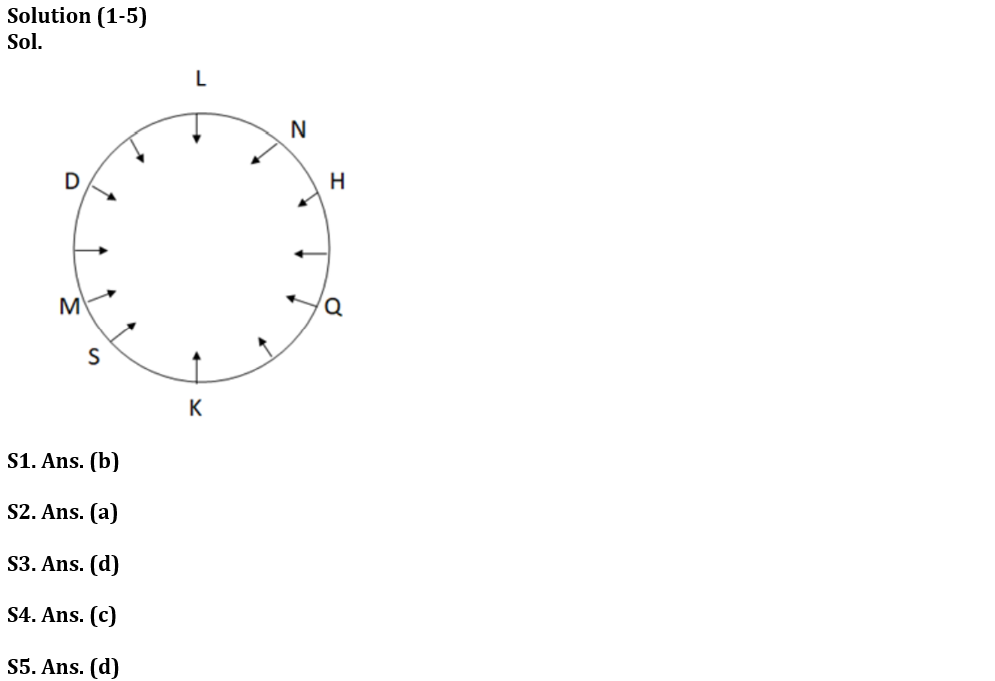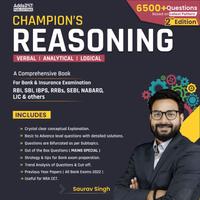Directions (1-5): Study the following data carefully and answer the questions accordingly.
A certain number of people are sitting around a circular table facing the center. S sits to the immediate left of K who sits opposite to L. More than ten and less than sixteen people are sitting in this arrangement. H sits fifth to the right of S. Three people are sitting between D and H. L and D are not immediate neighbors. Two people sit between N and D. Four people sit between M and N. Three people sit between Q and M.
Q1. How many people are sitting in this arrangement?
(a) 14
(b) 12
(c) 13
(d) 11
(e) None of these
Q2. Who sits opposite to N?
(a) S
(b) M
(c) Q
(d) D
(e) None of these
Q3. Who among the following is/are the immediate neighbors of L?
(a) Both Q and D
(b) H
(c) Both H and M
(d) N
(e) None of these
Q4. If C is an immediate neighbor of H, then which of the following is true regarding C?
(a) K is an immediate neighbor of C
(b) Four people are sitting between C and S
(c) L sits third to the right of C
(d) M and C are immediate neighbors
(e) All are correct
Q5. Four among the following five are same in a certain way and forms a group. Which among the following does not belong to the group?
(a) M, K
(b) H, Q
(c) Q, K
(d) N, H
(e) L, D
Solutions


. . . .




 English Language Quiz For Bank Foundatio...
English Language Quiz For Bank Foundatio...
 Quantitative Aptitude Quiz For Bank Foun...
Quantitative Aptitude Quiz For Bank Foun...




